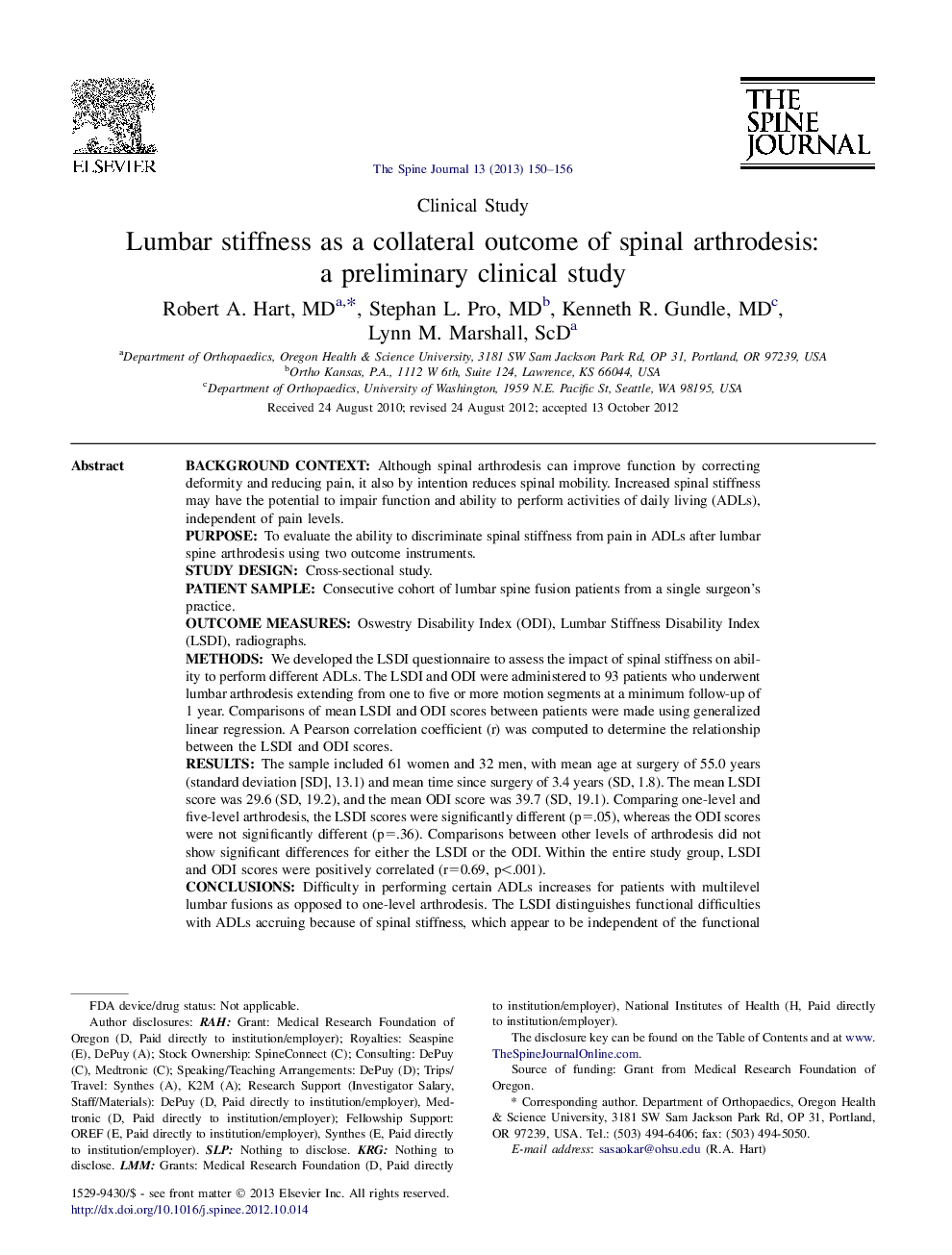| کد مقاله | کد نشریه | سال انتشار | مقاله انگلیسی | نسخه تمام متن |
|---|---|---|---|---|
| 4097299 | 1268585 | 2013 | 7 صفحه PDF | دانلود رایگان |

Background contextAlthough spinal arthrodesis can improve function by correcting deformity and reducing pain, it also by intention reduces spinal mobility. Increased spinal stiffness may have the potential to impair function and ability to perform activities of daily living (ADLs), independent of pain levels.PurposeTo evaluate the ability to discriminate spinal stiffness from pain in ADLs after lumbar spine arthrodesis using two outcome instruments.Study designCross-sectional study.Patient sampleConsecutive cohort of lumbar spine fusion patients from a single surgeon's practice.Outcome measuresOswestry Disability Index (ODI), Lumbar Stiffness Disability Index (LSDI), radiographs.MethodsWe developed the LSDI questionnaire to assess the impact of spinal stiffness on ability to perform different ADLs. The LSDI and ODI were administered to 93 patients who underwent lumbar arthrodesis extending from one to five or more motion segments at a minimum follow-up of 1 year. Comparisons of mean LSDI and ODI scores between patients were made using generalized linear regression. A Pearson correlation coefficient (r) was computed to determine the relationship between the LSDI and ODI scores.ResultsThe sample included 61 women and 32 men, with mean age at surgery of 55.0 years (standard deviation [SD], 13.1) and mean time since surgery of 3.4 years (SD, 1.8). The mean LSDI score was 29.6 (SD, 19.2), and the mean ODI score was 39.7 (SD, 19.1). Comparing one-level and five-level arthrodesis, the LSDI scores were significantly different (p=.05), whereas the ODI scores were not significantly different (p=.36). Comparisons between other levels of arthrodesis did not show significant differences for either the LSDI or the ODI. Within the entire study group, LSDI and ODI scores were positively correlated (r=0.69, p<.001).ConclusionsDifficulty in performing certain ADLs increases for patients with multilevel lumbar fusions as opposed to one-level arthrodesis. The LSDI distinguishes functional difficulties with ADLs accruing because of spinal stiffness, which appear to be independent of the functional limitations resulting from low back pain as measured by ODI.
Journal: The Spine Journal - Volume 13, Issue 2, February 2013, Pages 150–156